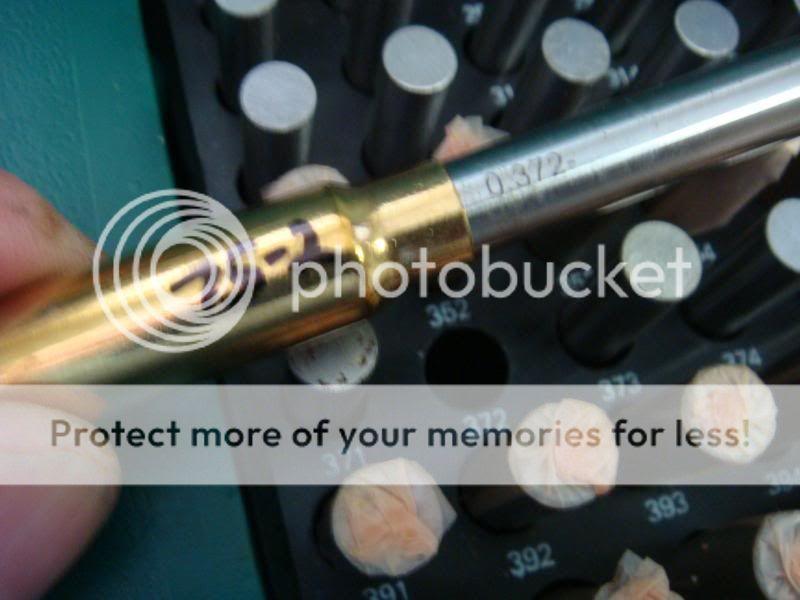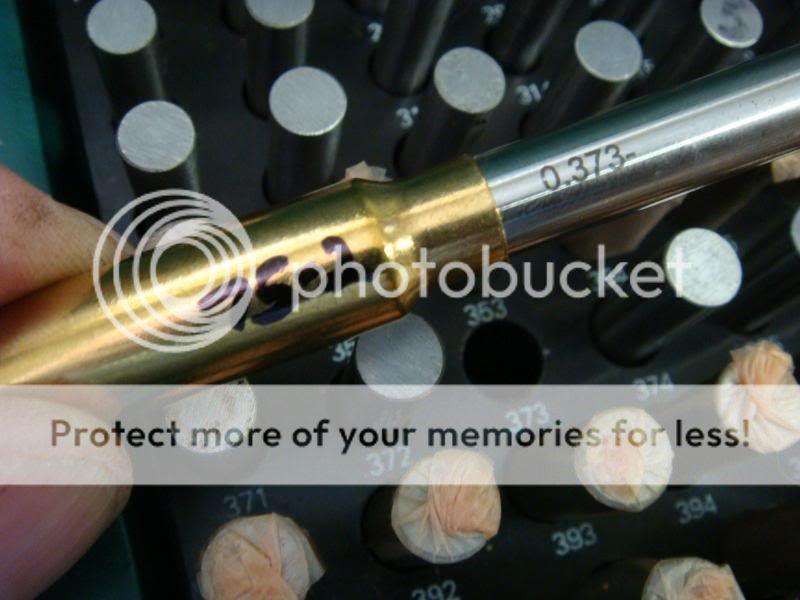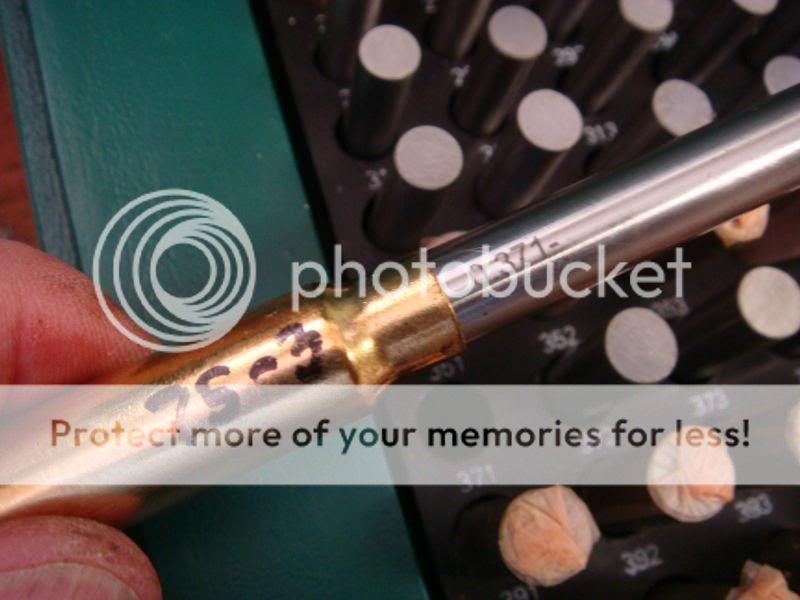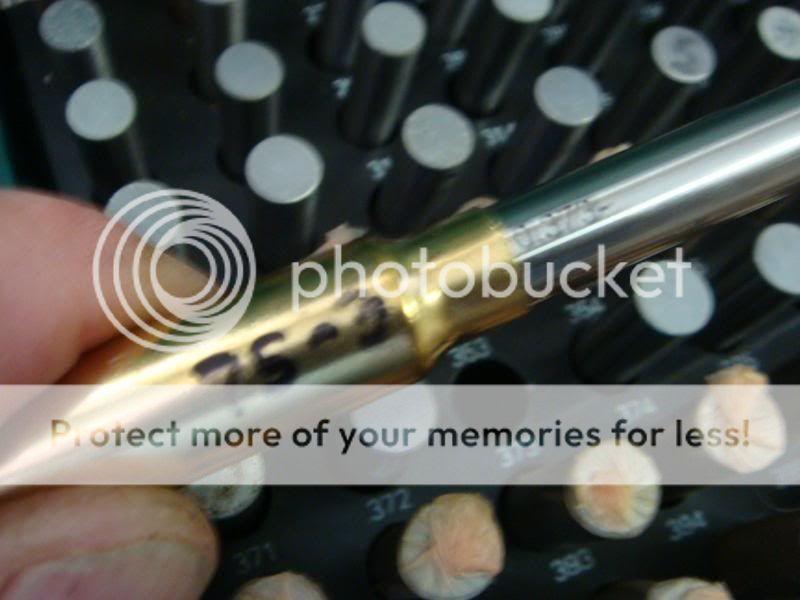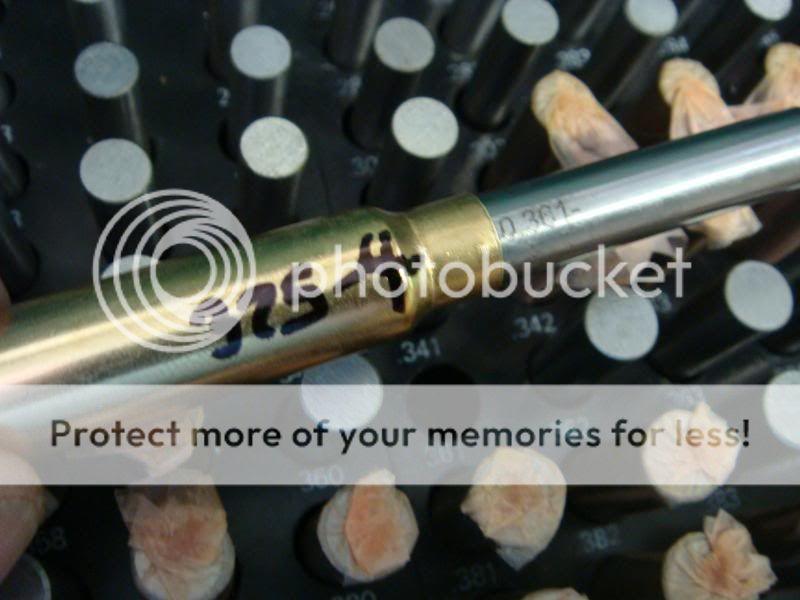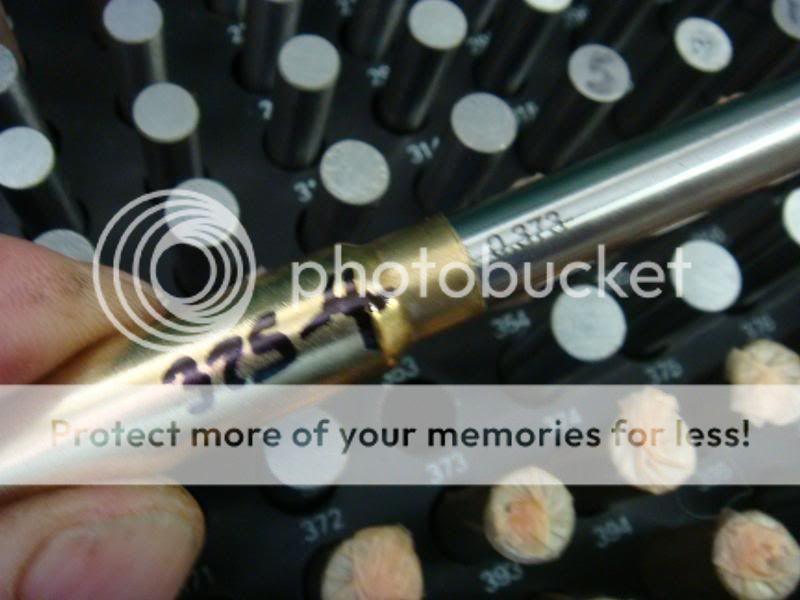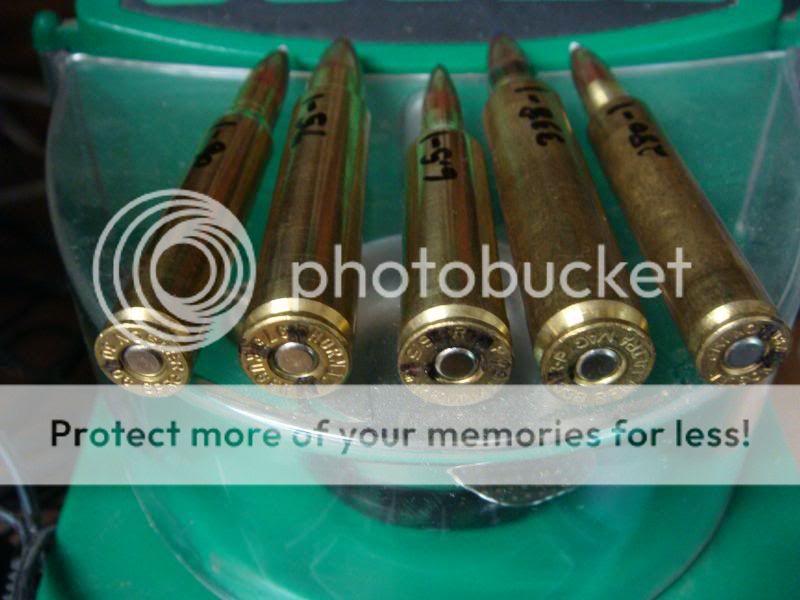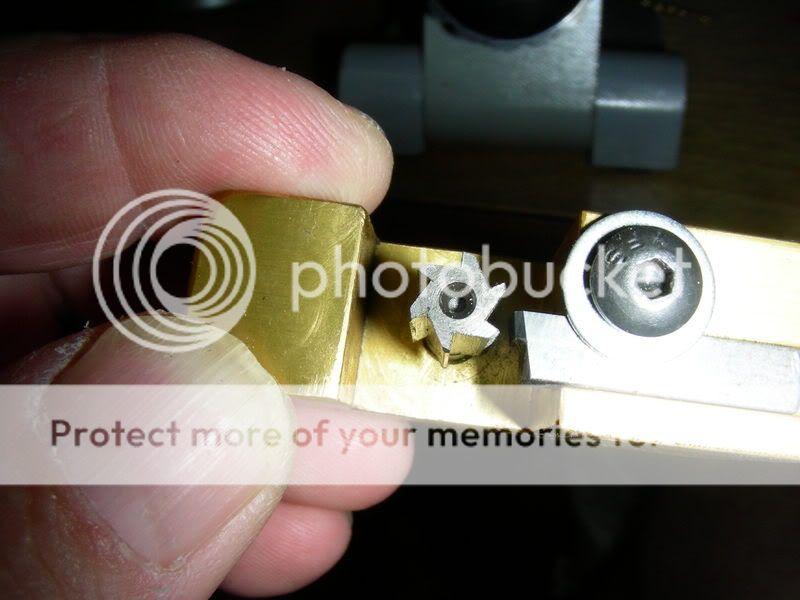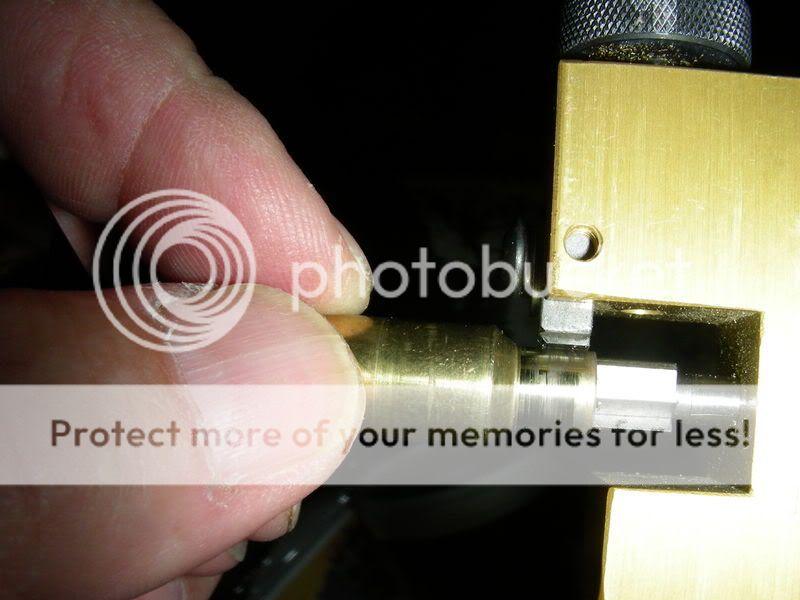woods
Well-Known Member
I recently did a test on pulling bullets and the resultant ID of necks to post on another forum about the NECESSITY for resizing after bullet pulls. Took pictures to document. These were all loads taken at random from my load boxes for 5 different calibers:
30-06 - marked 06-1
375 Ruger - marked 75-1 for the existing load and 3 NEW cases marked 75-2, 75-3 & 374-4 added later not shown in original pic
6.5 rem mag - marked 6.5-1
338RUM - marked 338-1
280AI - marked 280-1
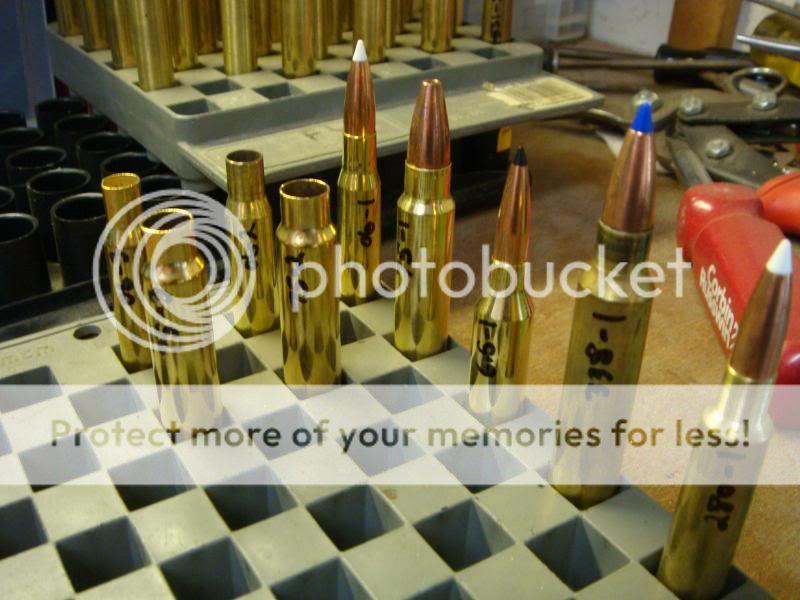
I pulled the bullets with a press mounted die type collet puller and measured the ID's with pin gauges. In each case I would try the caliber size pin and go down until one fit
The 30-06 case had a snug fit on a .306" pin
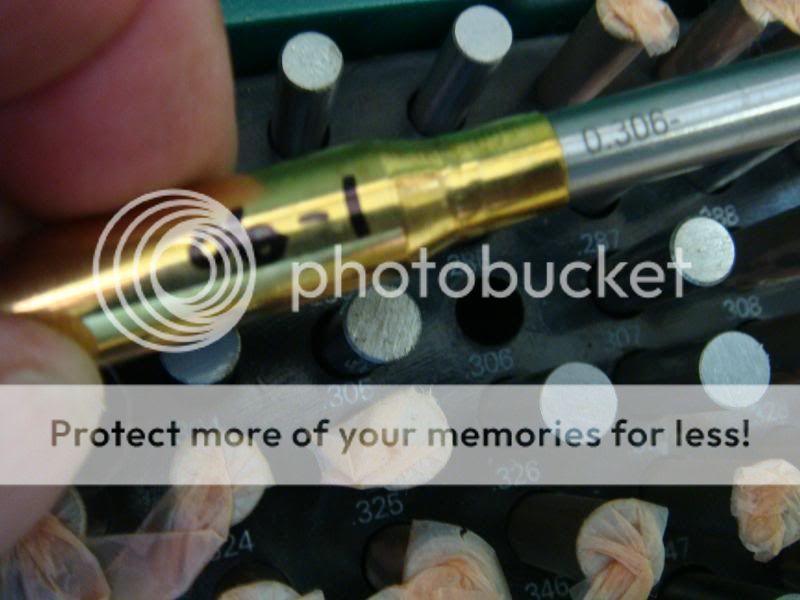
The 375 Ruger case had a snug fit on a .373" pin
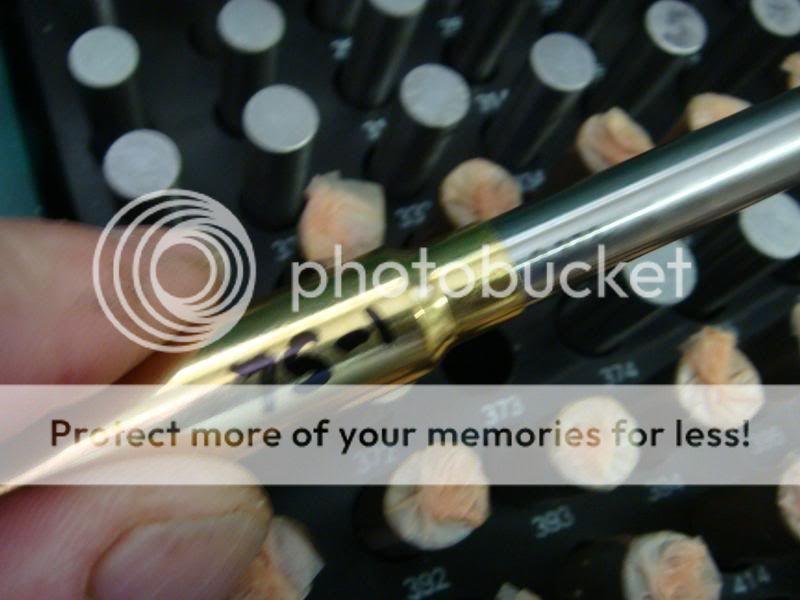
The 6.5 rem mag case had a snug fit on a .262" pin
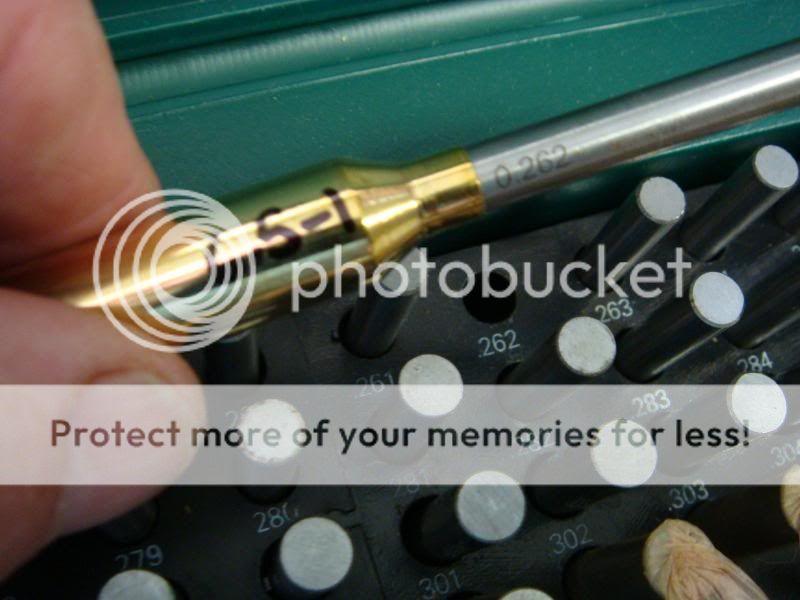
The 338RUM had a loose fit on a .336" pin
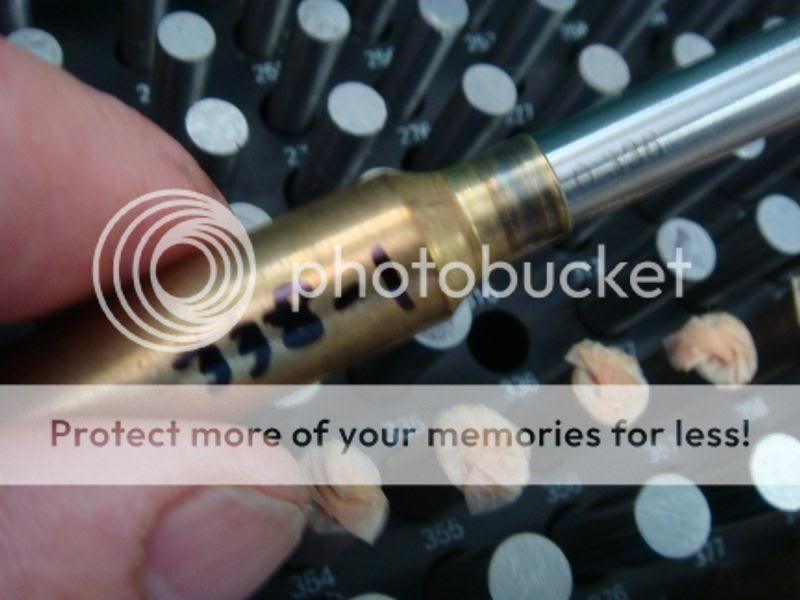
The 280AI had a tight fit on a .282" pin
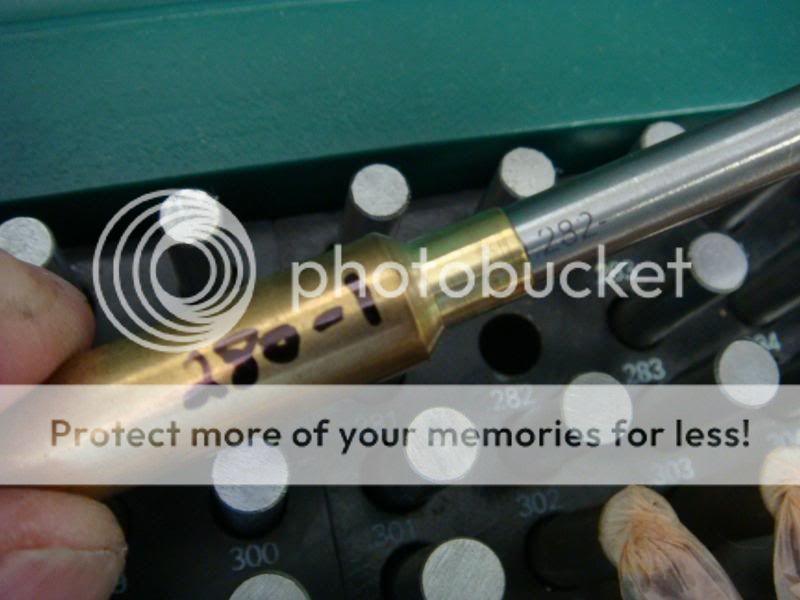
This will be a double post since you can only put 6 links in any one post and on the 375 Ruger I wanted to seat bullets into cases with different original ID's and see what they came back to.
However, my question would be
Why would any resizing be necessary if you always have a perfectly round neck expanded by the bullet and the bullet grip / inside diameter is always ~.002" below caliber? Most of these threads 90% of the posters all say you have to resize. Is that just the throw down or default answer or am I missing something here?
30-06 - marked 06-1
375 Ruger - marked 75-1 for the existing load and 3 NEW cases marked 75-2, 75-3 & 374-4 added later not shown in original pic
6.5 rem mag - marked 6.5-1
338RUM - marked 338-1
280AI - marked 280-1

I pulled the bullets with a press mounted die type collet puller and measured the ID's with pin gauges. In each case I would try the caliber size pin and go down until one fit
The 30-06 case had a snug fit on a .306" pin

The 375 Ruger case had a snug fit on a .373" pin

The 6.5 rem mag case had a snug fit on a .262" pin

The 338RUM had a loose fit on a .336" pin

The 280AI had a tight fit on a .282" pin

This will be a double post since you can only put 6 links in any one post and on the 375 Ruger I wanted to seat bullets into cases with different original ID's and see what they came back to.
However, my question would be
Why would any resizing be necessary if you always have a perfectly round neck expanded by the bullet and the bullet grip / inside diameter is always ~.002" below caliber? Most of these threads 90% of the posters all say you have to resize. Is that just the throw down or default answer or am I missing something here?

